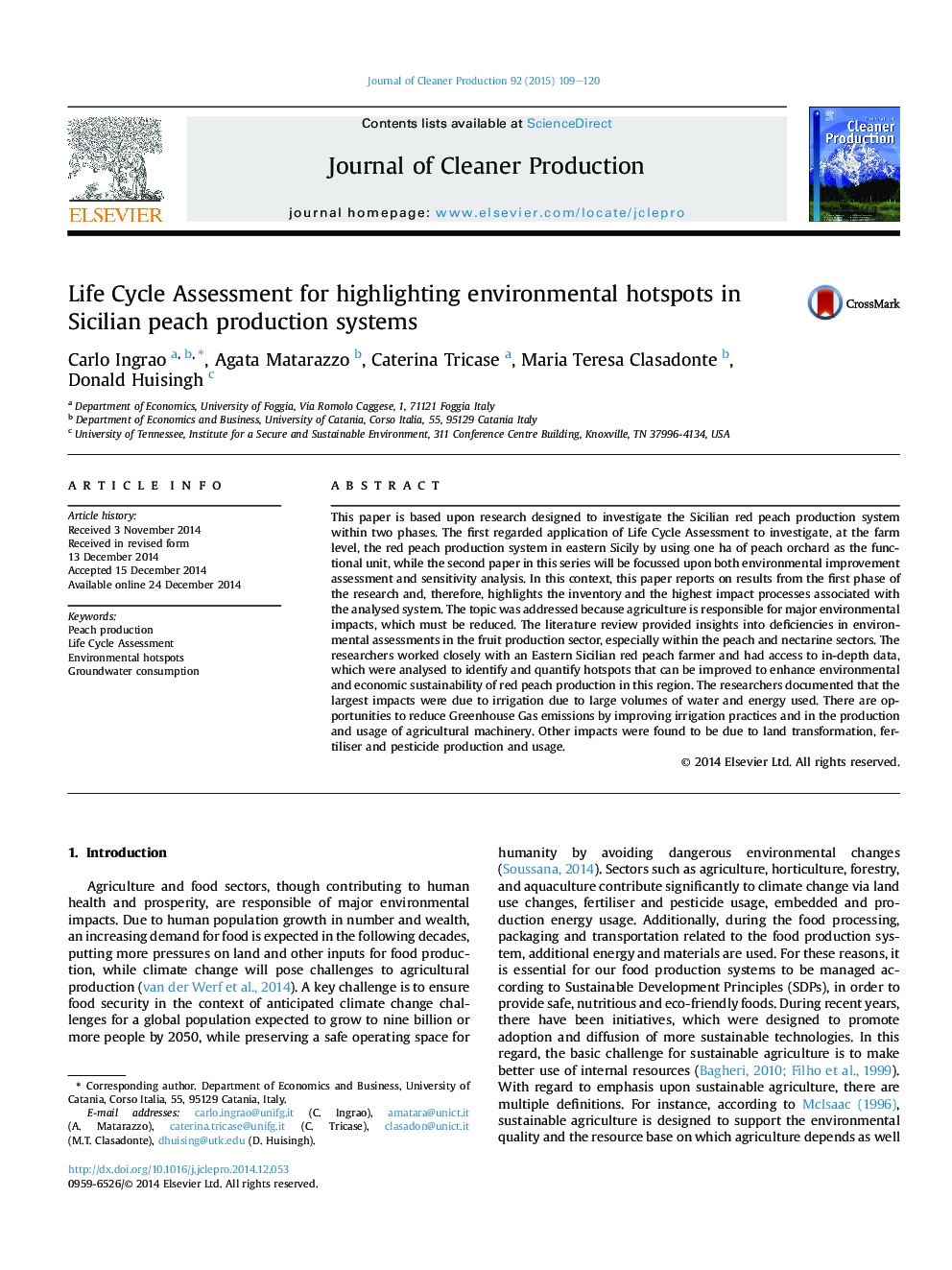| کد مقاله | کد نشریه | سال انتشار | مقاله انگلیسی | نسخه تمام متن |
|---|---|---|---|---|
| 1744626 | 1522154 | 2015 | 12 صفحه PDF | دانلود رایگان |
• Sicilian peach cultivation was environmentally assessed with a life cycle approach.
• Primary data were inventoried and analysed.
• The processes contributing most to the peach cultivation damage were highlighted.
• The most impacting resources used and substances emitted were identified.
• Environmental solutions oriented to damage reduction were proposed.
This paper is based upon research designed to investigate the Sicilian red peach production system within two phases. The first regarded application of Life Cycle Assessment to investigate, at the farm level, the red peach production system in eastern Sicily by using one ha of peach orchard as the functional unit, while the second paper in this series will be focussed upon both environmental improvement assessment and sensitivity analysis. In this context, this paper reports on results from the first phase of the research and, therefore, highlights the inventory and the highest impact processes associated with the analysed system. The topic was addressed because agriculture is responsible for major environmental impacts, which must be reduced. The literature review provided insights into deficiencies in environmental assessments in the fruit production sector, especially within the peach and nectarine sectors. The researchers worked closely with an Eastern Sicilian red peach farmer and had access to in-depth data, which were analysed to identify and quantify hotspots that can be improved to enhance environmental and economic sustainability of red peach production in this region. The researchers documented that the largest impacts were due to irrigation due to large volumes of water and energy used. There are opportunities to reduce Greenhouse Gas emissions by improving irrigation practices and in the production and usage of agricultural machinery. Other impacts were found to be due to land transformation, fertiliser and pesticide production and usage.
Figure optionsDownload as PowerPoint slide
Journal: Journal of Cleaner Production - Volume 92, 1 April 2015, Pages 109–120
